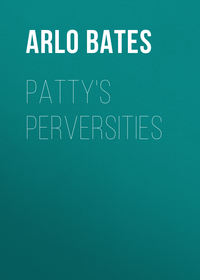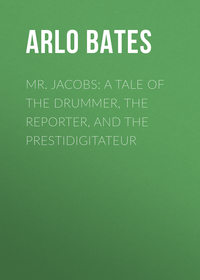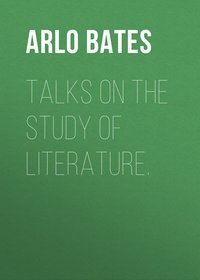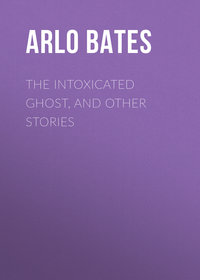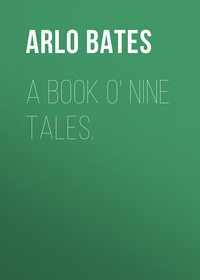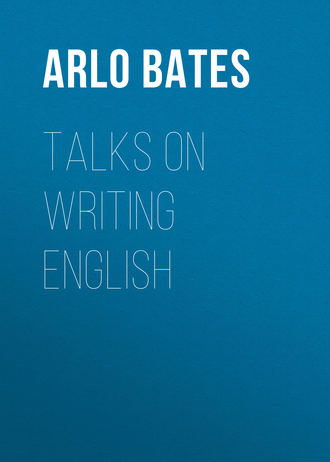 полная версия
полная версияTalks on Writing English
I am aware that my definition may make the matter less clear rather than more plain, but the thing is too elusive to be caught in the trap of a simple definition. Elegance is the quality in which the imagination most directly makes itself manifest. It is the most tangible proof that a writer possesses that power which at the start we spoke of as inborn and incommunicable. As a matter of workmanship, and so far as it may be learned, Elegance is chiefly the ability to convey in words the mood of the writer. It depends largely upon an exquisite sensitiveness to the indirect effect of words and of word-combination. It is to be cultivated by training the mind to consider always the value of terms in their connotation; to weigh them not only by their direct meaning, but by their association, and by the ideas and ideals and emotions which they bring to the mind; and by developing taste in literary construction. To write with Elegance, it is also necessary to keep in mind the effect upon the reader of the emotional word-color. The suggestions of words are dependent in part upon the mere vocal effect of the sounds producing them, upon the harmony of the sentence, the tone-value and cadence of clause and paragraph. All these things are elements which must be considered. Completely to master all these, so as to work upon the mind and imagination of the reader at will, is of course within the power of the great imagination only; but every student may advance toward it.
We are none of us able satisfactorily to define beauty, or to explain the pleasure which it excites; yet there is no one of us who has not recognized both. Why a curve is more pleasing to the eye than a straight line may be too deep a question; but none the less may one safely appeal to the universal experience that there are certain lines, certain forms, certain colors, certain sounds which give us pleasure. With equal assurance may one appeal to the universal instinct which is gratified by the adaptation of ends to means; to the innate human sense of the rightness of what is fitting; the constant pleasure in order, in appropriateness, in harmony. It is this instinct, this sense, this pleasure, which underlies the sensitiveness of the mind to what we call Elegance in composition.
The quality which we are discussing is, more than any other, dependent upon the personal taste and culture of the writer. The thing to be said to the student is perhaps this: “Elegance is the result of a keen and acutely imaginative perception of the fitness of things, and of a quick appreciation of beauty, with the power to convey both by a delicate adaptation of literary means to literary effects.” A keen and acute perception of the fitness of things can only be acquired by the development of the taste. This is an affair of culture in its broadest sense, and it is hardly possible to separate here the question of literary excellence from that of general development. The study of the masterpieces of literature – always with earnestness and with sympathy – is the most direct means of improving a sensitiveness to literary fitness and to literary beauty. The adaptation of means to ends we shall go on considering throughout these talks; and now, as always, it is necessary to remember that the way to learn to write is to write. The way to achieve Elegance is to labor for it with that persistence which is in itself the best compensation which Heaven has bestowed upon man for all other boons denied. “Persistence, persistence, and persistence” is the motto which the student must engrave on his heart.
There will always remain the personal equation. No student can afford to close his eyes to the fact that all men are born intellectually unequal. To one has Nature given gifts of appreciation, of apprehension, and of expression, while from another she has withheld them. This personal difference affects all work, and it affects work more and more strongly as we draw nearer to that quality in literature which is incommunicable. Steadily, since the beginning of these talks, have we been advancing toward those fields of composition where comes into play that power which is the gift of the gods only; that imaginative essence which some men are dowered with at birth, and which some go seeking their whole lives through with insistence pathetically vain. The one thing important is, that the student not only accept his individual limitations, but that he do not stop short of them. It is necessary to realize that one has not genius, and then to work as if one had; and it is amazing how much may be done in this way. Nature, for instance, plainly intended that Matthew Arnold should not write elegant prose, and she absolutely forbade him to write poetry, yet he succeeded in doing both. The earnest student of literary art should resolutely refuse to be satisfied with any thing short of the miracle of the impossible, and haply so he may sometimes attain to it.
VII
MEANS AND EFFECTS
When the student has come to have a clear idea of what is to be sought in composition, he naturally goes on to inquire by what means a writer can gain the ends desired. It has been shown that there are certain principles which govern the mechanical structure of language, and also that there are as well principles which have to do with the quality of what is written. The next step is to examine the especial means which are at the command of the worker, and what effects may be secured by the use of given means.
It has already been said and insisted upon that it is necessary to know accurately what effect the writer desires to produce; and it is to be added that it is especially needful to realize from the start what is to be the conclusion of a work, great or small. The end of a composition is its consummation, the climax toward which all else conducts the reader, the ultimate effect to which all other effects are subordinate. The writer who sets out to go nowhere in particular, it has been said, is little likely to arrive anywhere. It is also to be remembered that, unless he is clearly aware what is to be his strongest point, he is not in a position to make all other parts properly subordinate to this, – to secure that careful proportion of emphasis which is one of the great essentials of all good work in whatever province of art.
Before he begins to write, the writer must make up his mind how he intends to end. He may, it is true, modify to some extent the first idea of the form in which this climax of his work is to be put, but it is safe to lay down as a general rule that he shall not essentially alter it. Whether one sits down to write a novel, a tale, an essay, an editorial, or a simple paragraph, let him know at least what the conclusion is to be, whether he is aware of the steps by which he is to reach this or not. The minor points may be thought up as one proceeds, but the end, which is in a manner the reason of the existence of the whole, must be clear in the mind of the writer from the very start.
It is this thing which Mr. Walter Pater means when he speaks of —
That architectural conception of a work which foresees the end from the beginning, and never loses sight of it, and in every part is conscious of all the rest, till the very last sentence does but, with undiminished vigor, unfold and justify the first.
The conclusion being well defined in the writer’s thought, the next thing to be determined is the point of view. The point of view is to any composition what the hypothesis is to a proposition in geometry. It is the assumption of personality and of attitude which is presupposed from the start, and which must be rigidly maintained to the end.
If a writer is describing a landscape, he is obliged to fix in his own mind the point from which he is to consider that landscape as being seen, – whether near or remote, from hill or plain, from a bridge, a window, or it may be from the deck of a vessel. If he hopes to produce an impression which shall be clear, or to bring up vividly in the mind of the reader the thing described, he must not forget where the reader is supposed to be placed. If at the start he writes as if the view were remote, and then forgets and speaks of it as if it were near at hand, he destroys the consistency of the work and makes all ineffectual.
Another easily appreciated illustration is to be found in novels which are written in the form of an autobiography. Since the story is supposed to be narrated by one of the characters, it follows that nothing should be told which that person could not know. The introduction of scenes at which he could not have been present, of talk which he could not have heard, of thoughts which he had no means of discovering, completely dispels the illusion. If these things must be used, care must be taken to show how the narrator came to know them; since otherwise the hypothesis with which the author started is violated by the alteration of the point of view. The reader may or may not realize why the story loses its effect of reality, but he cannot fail to feel that it does lose it.
The same principle applies to everything that is written, even to the most trivial paragraph. Consciously or unconsciously, the writer at the start assumes a certain mental attitude toward the subject of which he writes, and this attitude he must carefully preserve. Of course the point of view may be progressive, as when one describes the scenery as viewed from a car window or shows the change of opinion; but in this case the motion is part of the original hypothesis. The first assumption must be adhered to, since to change the point of view is to break faith with the reader, and to break faith is to lose his confidence.
The philosophy of the matter is simple and obvious enough. It is the aim to induce the reader to submit, for the time being, his personality to that of the writer; to induce him to see with the eyes of the author, and to think with the author’s mind. The slightest jar may destroy all illusion; the least difficulty may make the reader assert the supremacy of his own individuality. If even unconsciously his judgment is offended, his own consciousness is sure to assert itself, and he gives himself up no longer.
In practical work, the secret of preserving one mental attitude is largely that of being clearly aware of it. This detail of composition is perhaps most easily understood in its application to description or narration, but it must be as clearly realized in all composition. It is of high importance to determine beforehand what is the attitude of the writer both toward the subject and toward the reader addressed. The effect of a failure to observe this is found in a great many letters, and, perhaps I may be pardoned if I add, especially in feminine letters. The mind of woman is so flexible, so versatile, so capable of seeing many sides to a subject which to the duller masculine intellect seems to have but one, that it not infrequently happens that in a single page of a woman’s letter there will be half a dozen points of view, or even that seeming impossibility of two or three points of view at once.
Often the application of this principle is so subtle that the tyro is entirely at a loss to know what is the matter with his sentence. Take these examples: —
The crowd turns, departs, disintegrates.
I noticed that the hat was of soft felt, and one might easily guess that it had been bought at a bargain sale. It lent a comfortable sense of satisfaction to its owner, and suggested to him the idea of going to church.
In the former, the writer’s point of view is that of one looking out of a window at a crowd, and it is proper that he should say “turns, departs;” but after the crowd has departed he cannot see whether it disintegrates or not. If he should say, “Turns, disintegrates, departs,” one could find no fault. In the second example, the point of view is at first that of an observer who sees the hat on the head of a stranger; then, without warning, it is shifted to the mind of any observer, – “one,” – and then, in a twinkling, to the thought of the wearer himself, which has been by the hat turned to the idea of going to church.
We shall have to do later with the point of view in its application to the various sorts of composition. Here it is enough to add the warning to inexperienced writers: Do not write to discover what you think, or how you feel about a subject. These questions are to be settled before writing is begun. In half the themes which I read, it is apparent that the writer has been going ahead in a sort of forlorn hope of ultimately learning his own opinions. To be in doubt when one begins, either of where one is bound or of how the attempt to get there is to be made, is as fatal in writing as in horse-racing. There is a good deal of what might be called the June-bug style of composition. Just as a beetle bangs his clumsy thick head against a window or a netting in hope that he may chance to strike a place where he can get through to the lamp within, so the June-bug writer goes banging absurdly down his page, bumping against any obstacle, trusting to fate and the chapter of accidents to show somewhere and somehow a way through. The man who has learned to write does not begin until he has an idea what his way through is to be. This being clear in his mind, he goes consistently toward it, and his consistency is what is called keeping the point of view.
The point of view being selected, it is often necessary to give the reader a clue to it. Sometimes it is needful to use no inconsiderable amount of skill to bring him to accept it. The well-trained reader always endeavors to put himself into complete sympathy with an author. The author is bound to make this as easy as possible, and even, if may be, to render it inevitable, to the end that the reader shall be forced to share the outlook of the writer, whether with conscious willingness or not. In obvious matters, like descriptions, the simple device of naming the point of view is enough. When Keats begins a poem, —
I stood tiptoe upon a little hill, —he gives the point of view. So does Spenser when he opens the “Faerie Queene:” —
A gentle knight was pricking on the plain.Equally is Lowell giving the point of view in the opening of the essay on Chaucer, already quoted: “Will it do to say anything more about Chaucer?” Here he at once puts the reader into the attitude of examining with fresh attention a subject which has been greatly discussed; by implication he intimates that there is still enough wheat in the often-threshed straw to make it worth while once more to turn it over. With equal skill and felicity he puts the reader into the mood in which he writes of Carlyle by the first sentence of another essay: —
A feeling of comical sadness is likely to come over the mind of any middle-aged man who sets himself to recollecting the names of the authors that have been famous, and the number of contemporary immortalities whose end he has seen since coming to manhood.
The reader perceives at once that the subject which is to be treated is to be regarded as of less assured permanence of importance than has been sometimes held. Evidently Lowell would not allude to the many transient so-called immortalities if he had not at least a suspicion that the contemporary reputation of Carlyle is likely to be lessened by time. The key-note is struck, and what follows is governed by it.
The secret of holding the reader to the point of view consists largely of keeping strictly to it in writing. If the author does not change his position, the reader is unconsciously drawn to it. There is a persuasive power in mere persistency which is recognized by any one who has had to do with an obstinate person, and this power tells in literature as fully as in domestic life.
We come next to figurative language, so called; and at this point it used to be the fashion to overwhelm the student with a list of dreadful names which was in itself enough to paralyze the mental processes, and to discourage at once and forever all aspiration after excellence. The appalling words synecdoche, metonymy, antonomasia, asyndeton, anacolouthon, parrhesia, onomatopoeia, and the rest, seemed to fascinate the soul of writers on composition as completely as they dazed and stupefied the understanding of the unhappy student. Pedants have amused themselves by darkening wisdom with words without knowledge, until it is all but impossible to come at anything practical in the old-fashioned books, – which were invariably called “treatises.” It has been found that this is idle, and for the most part it has been laid aside. A few terms are for convenience still used, but in these days the effort, instead of being to give learned and pompous-sounding treatises on the art of composition, is if possible to set down what will assist the student in learning literary expression.
One of the first literary devices of which man’s mind availed itself in its efforts to communicate ideas, was the use of figures. The thought moves naturally from the near to the remote, and from that which is known to that which is unknown. If we attempt to describe or explain a thing, we instinctively compare it to something which is familiar. “It is like this,” we say; “it is similar to that thing which you know.” It has often been remarked that all language is full of what Trench happily calls the fossil remains of metaphors, – words which were once used to convey an idea by comparing it to something known, but of which the figurative force is now forgotten. It is hardly necessary to give examples, because every student has had his attention called to this class of words; but their number illustrates how natural comparisons are, and how constantly they are called to aid expression.
To comparison it is customary to give two names, according as the likeness is stated explicitly or is implied. If a writer says, “The officer followed his victim like a sleuth-hound,” – a phrase which used to come into all the detective stories, – he makes an explicit comparison between the officer and a hound. If he writes, “The sleuth-hound of justice followed the track of his prey,” – a phrase still to be met with in newspapers of a certain class, – the comparison is the same, but it is assumed instead of being explicitly stated. To the expressed comparison is given the name “simile;” to the comparison assumed, the name “metaphor.” It is of no great practical importance – unless in the line of encouraging carefulness in the discrimination of words – whether the distinction of names is carefully observed or not, but it is of some convenience in study.
The object of using figures is to add Clearness, or Force, or Elegance – or all of these – to the presentation of an idea. Constantly it happens that, by declaring that an unknown thing is like some known thing, the writer enables the reader to form an idea of it as it is. When in Job we read the beautiful simile, “My days are swifter than a weaver’s shuttle,” we are impressed by the passage of life with a vividness which could not be secured by any mere assertion, no matter how strong. The physical fact is so easily grasped that it makes more clear the intellectual reflection. In the same wonderful poem – and no one studying literature either for profit or for pleasure can afford to neglect the book of Job – there are beautiful figures enough to teach the art of using them were it otherwise forgotten. “Man is born unto trouble, as the sparks fly upward;” “I caused the widow’s heart to sing for joy;” “The house appointed for all living;” “He maketh the deep to boil like a pot;” “Thou shalt come to thy grave in a full age, like as a shock of corn cometh in in his season,” – it is impossible not to see how in every case the thought is made more clear by the comparison.
It is evident, too, that in each case cited the expression has gained not only in Clearness but in Force. The moment a likeness is suggested, the mind of the reader is led to make the comparison, and is thus alive and alert; while in each case the figure suggests far more than any bare statement of fact. Since the secret of Force lies in connotation, in the suggestiveness which leads the mind onward into the mood so that it seems to itself to originate the ideas which are really given to it directly or indirectly by the author, it follows that in the use of figures is one of the most effectual means of securing this quality. Job says, “My days are swifter than a weaver’s shuttle,” and with the plain statement of the brevity of life come suggestions of the inevitableness of this brevity; we seem to see man tossed by the hand of the unseen, as a shuttle is thrown by the hand of the weaver, flung to and fro without power to stay or to resist. The whole despairing mood of the afflicted patriarch is summed up in the single simile. To come nearer to our own times, take that simile which is perhaps the most beautiful in English literature outside of Shakespeare: —
Fair as a star when only oneIs shining in the sky.What is suggested is all the serenity of the eventide; the hush which comes between the daylight and the dark; the sense of peace; that feeling that a mystery is being wrought before our very eyes, when out of the faintly rose-purple haze of the sky throbs into radiance the first star. There is, too, that sense of restfulness that belongs to the twilight coolness, and, in some undefinable way, an idea of purity and innocence too high and too subtle to be defined. The gain in Force from such richness of suggestion is evident.
Even more closely than with Clearness or Force is the use of figures connected with Elegance. More than any other means at the disposal of the writer does this help to establish the mood which the author desires to share with his reader. More, perhaps, than any other means may figures be moulded to manifold uses, and thus they have large share in that adaptation of the means to an end, in which, as has been said, lies the secret of Elegance.
The proper use of figures is a thing which it is of the utmost importance for the student to master thoroughly; and I have ventured to set down a few rules which may be useful in practical work: —
1. Never use a figure without a definite purpose, and never simply for its own sake.
2. Never subordinate sense to figure.
3. Make all figures easily comprehensible.
4. Never make a comparison without realizing fully what it is.
5. Never push a figure too far.
The reason for giving the first rule is, that so many young writers – I say young writers as a matter of courtesy, since there are plenty of old ones of whom it is no less true! – are given to the fault of piling up figures in much the same way that a tasteless milliner sometimes puts on her bonnets all the artificial flowers that can be made to stick to them, or as a stupid architect kills the design of a building by overloading it with ornaments. Figures exist for the style, and not the style for the figures; and from this follows not only the first rule, but the second also. To make the figure of more importance than the thing which it is to illustrate or to reinforce is to exalt the servant above the master.
The third rule is justified by the fact that figures are used to increase the lucidity of style, and that in a manner all comparisons are to be looked upon as in the nature of illustrations. It follows that they must, in order to fulfill their function, be easily understood themselves. Examine this passage: —
… The Wandering Jew has seenMen come and go as the fixed PyramidsHave seen even the steadfast polar starShift in its place.To see any force in this, it is necessary to be aware that, since the Pyramids were built, the North Star has been altered in the precession of the equinoxes. A writer has no right to appeal to such special knowledge. This is one of the reasons why there are so few of the discoveries of modern science, rich and varied as they are, which can effectively be used in simile. The allusions would not be commonly understood. Another reason, equally potent, is that in general the connotation of scientific facts is too practical and uninspiring to add to the interest of poetic or imaginative themes. In old days it was the fashion for minor poets to go as far afield as possible for similes, which were dragged into verse as a Comanche Indian drags into camp his captives. Foot-notes were generously provided for the enlightenment of the reader, and nobody seemed to see the absurdity of illustrating a thought by a figure so obscure that it had itself to be explained. The tropes of the minor poets of the last century remind one of the remark of the Scotch goodwife about a learnedly obscure commentary on the Scriptures: “’Tis a braw wise book, na dout; an’ the Bible does explain it wonderfu’.” If a writer will hold to his own experience for his similes, he will have little difficulty in deciding what is likely to be readily understood by the general reader; and if he will remember that, provided that there be nothing vulgar or ludicrous or commonplace in its suggestion, the more homely an allusion the more effective it is likely to be, he cannot go far wrong.


